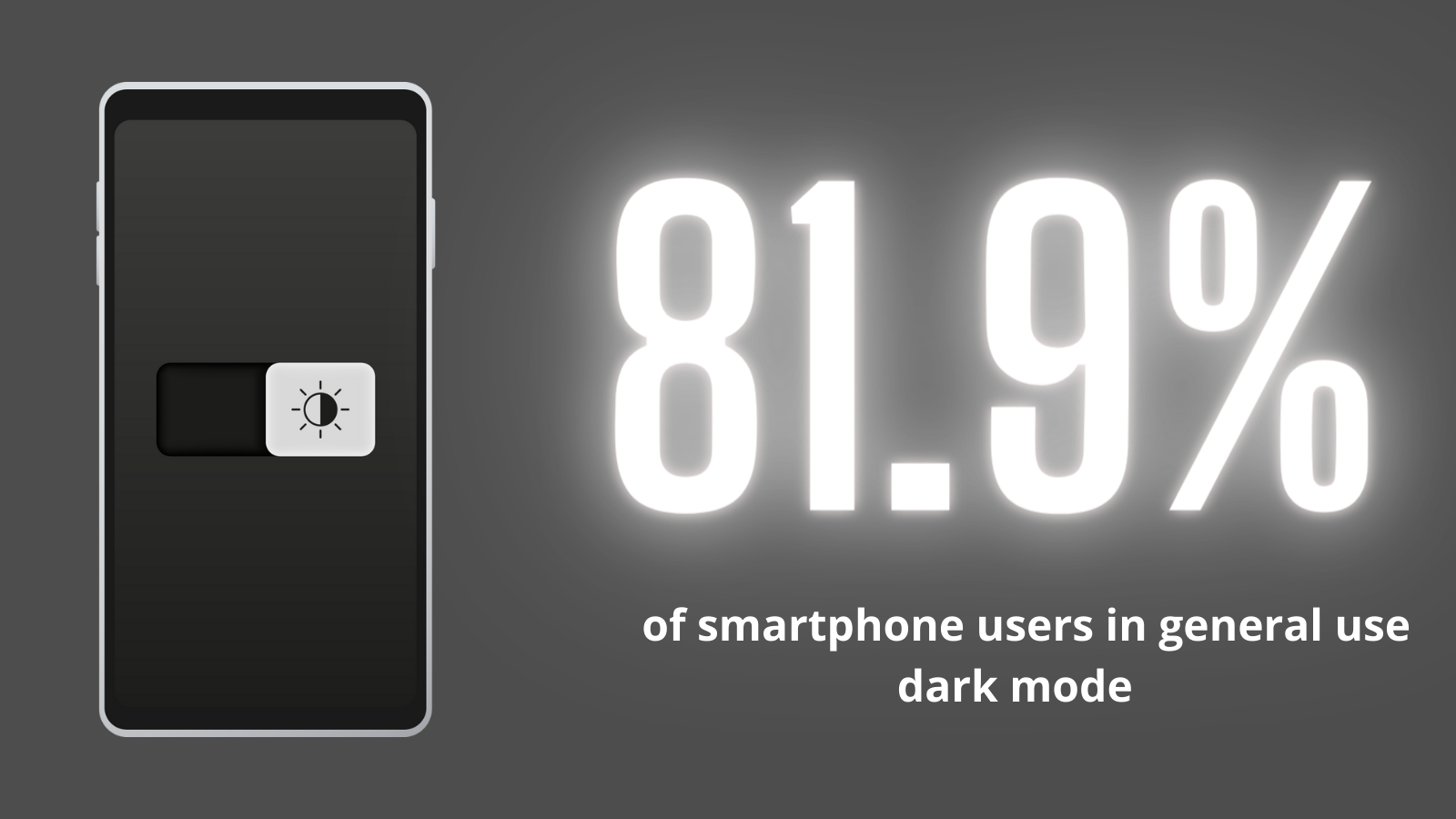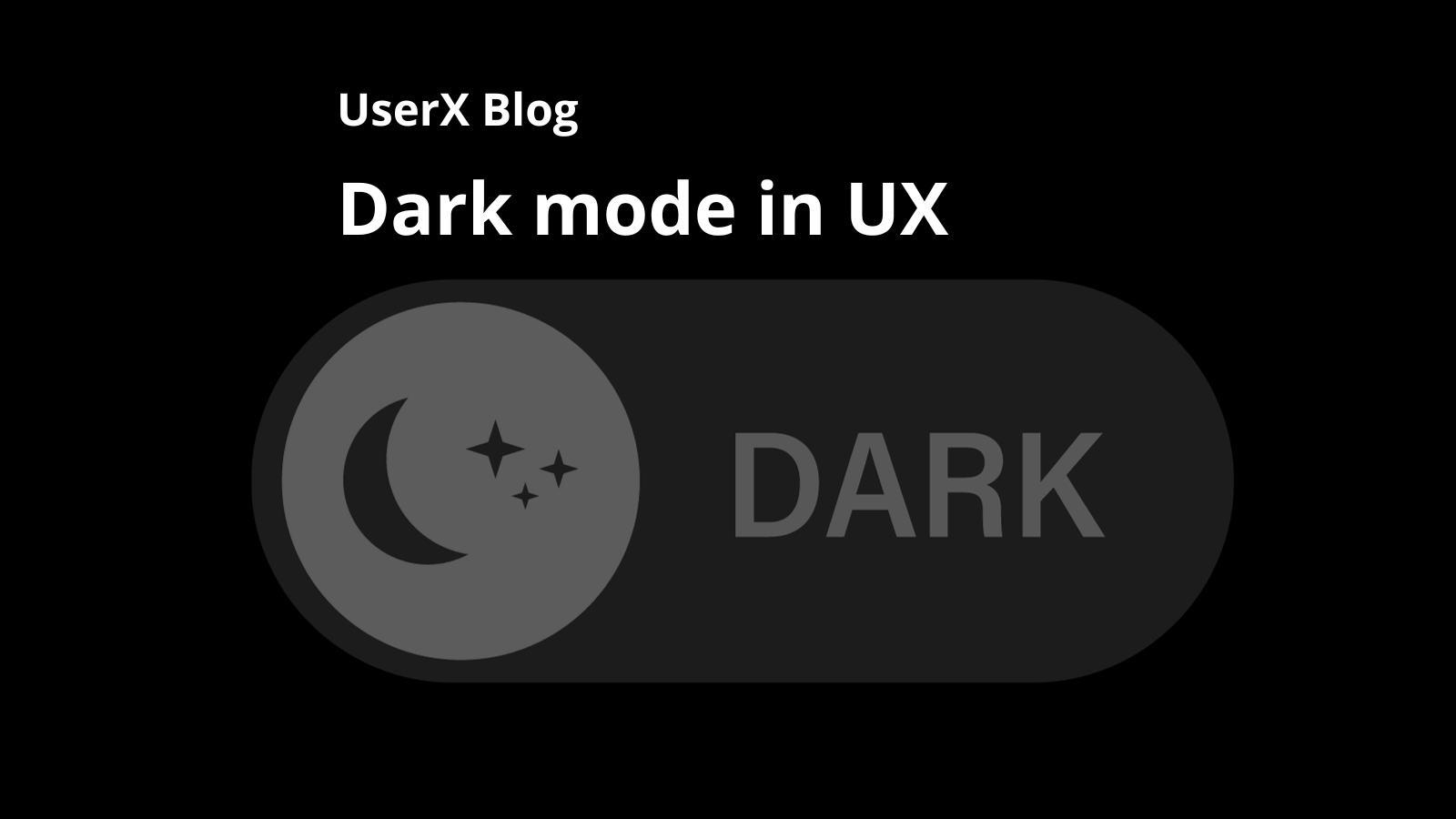Have you ever wondered how the sleek and soothing Dark Mode in your favorite mobile apps came to be? This feature, a cornerstone in modern Mobile App Dark Mode experiences, has evolved from a mere aesthetic choice to a significant aspect of user interface design. The Dark Mode Evolution in mobile applications is not just a trend; it's a revolution in how we interact with our digital devices. Initially introduced as a cool, alternative theme, it has rapidly transformed into an essential component for enhancing user comfort and battery efficiency.
In this exploration, we'll dive into the fascinating journey of dark mode. From its early inception to its widespread adoption across major platforms, dark mode has reshaped our interaction with mobile applications. Join us as we unfold the story behind this feature's rise to fame, examining the technological advancements and design innovations that have made it a user-favorite. The evolution of dark mode is a compelling narrative of how a simple concept can redefine the user experience in mobile technology.
In this exploration, we'll dive into the fascinating journey of dark mode. From its early inception to its widespread adoption across major platforms, dark mode has reshaped our interaction with mobile applications. Join us as we unfold the story behind this feature's rise to fame, examining the technological advancements and design innovations that have made it a user-favorite. The evolution of dark mode is a compelling narrative of how a simple concept can redefine the user experience in mobile technology.
The Early Days of Dark Mode
The journey into the Dark Mode History in mobile applications begins much earlier than many might expect. Long before it became a mainstream feature in today's Night Mode Mobile Applications, dark mode had humble beginnings, initially emerging as a practical solution rather than a design trend.
In the earliest days of mobile app development, designers and developers sought ways to mitigate the intense brightness of traditional screens. This was especially crucial in low-light environments where the standard, bright interfaces could cause discomfort to users. Enter the concept of dark mode - a design choice that flipped the script, replacing glaring white backgrounds with soothing darker hues. This not only provided a respite for the eyes but also opened the door to a new realm of aesthetic possibilities in app design.
The initial adopters of dark mode were often developers themselves, who integrated it into software development environments and coding platforms. This choice was driven by the necessity of long hours spent coding, where a darker screen proved less straining on the eyes. However, the appeal of dark mode quickly transcended the developer community. Early mobile applications began experimenting with dark themes, recognizing their potential to offer a unique and comfortable user experience.
These pioneering applications set the stage for what was to become a widespread adoption of dark mode. Users began to appreciate the reduced eye strain and the distinctive look that dark mode provided. This growing user preference did not go unnoticed by major players in the tech industry, who began to see dark mode not just as an optional feature but as an essential aspect of user interface design.
As we reflect on these early days of dark mode, it becomes evident that its origins were rooted in practicality and user comfort. It was this foundation that paved the way for the widespread acceptance and popularity of dark mode in the mobile applications we use today.
Adoption by Major Platforms and Apps
The widespread Adoption of Dark Mode by Major Platforms marks a significant turning point in the narrative of dark mode. This adoption wasn't just a fleeting trend; it represented a fundamental shift in Mobile App Design Trends. The Black Theme Adoption in Apps became a testament to the growing demand for a more eye-friendly and power-efficient user interface — the Dark User Interface.
One of the most notable milestones in this journey was when major operating systems for smartphones embraced dark mode. This was a game-changer, as it allowed users to apply a dark theme across the entire system, affecting not just individual apps but the overall user experience. The adoption by these platforms sent a clear message: dark mode was no longer an optional extra but a necessary feature in the eyes of the public and industry alike.
Following suit, popular social media platforms, productivity tools, and even gaming apps began rolling out their versions of dark mode. Each implementation offered a unique twist to the feature, some opting for a true black interface to maximize battery efficiency on OLED screens, while others chose softer, dark gray hues for a less stark contrast. This period saw a surge in user engagement and satisfaction, as people enjoyed the new, eye-friendly interfaces.
The adoption by these major players wasn't just about following a trend. It was a response to extensive user feedback calling for a more comfortable viewing experience in various lighting conditions. The transition to dark mode was also driven by the growing awareness of its benefits, such as reduced eye strain, especially in low-light environments, and improved battery performance on devices with specific screen types.
In addition to these user-centric advantages, the dark mode also opened up new avenues in app design. Designers were challenged to rethink color schemes, contrast ratios, and legibility, leading to innovative design solutions that enhanced user experience. This era of adoption and experimentation significantly influenced the evolution of app aesthetics, signaling the importance of flexibility and user choice in design.
In summary, the adoption of dark mode by major platforms and applications was more than just a cosmetic update. It was a pivotal moment that highlighted the industry's commitment to user comfort and innovation. As we look back at these key milestones, it becomes clear that the dark mode phenomenon was a crucial step in the evolution of mobile app design, one that has left a lasting impact on the way we interact with our digital devices.
User Experience and Design Considerations
The implementation of Dark Mode UI/UX has profoundly impacted the user experience in mobile applications. This transition to User Interface Dark Settings has not been without its challenges, but the benefits have significantly reshaped the way users interact with apps. Accompanying this change are the evolving App Color Schemes and the increased focus on Visual Ergonomics in Apps.

One of the most immediate impacts of dark mode on user experience is the reduction in eye strain, especially in low-light conditions. This change has been a boon for users who spend significant time on their devices, offering a more comfortable viewing experience. Moreover, dark mode has been found to reduce screen glare, which is not only beneficial for visual comfort but also for those with light sensitivity or certain visual impairments.
However, the switch to a dark user interface is not without its challenges. Designers face the task of ensuring legibility and contrast, which can be more complex in a dark mode environment. Text, icons, and other elements must be carefully balanced to ensure they stand out against dark backgrounds. This has led to innovative approaches in color schemes, where hues are chosen not just for aesthetic appeal but for functionality and accessibility.
Another significant benefit of dark mode is its potential to save battery life on devices with OLED or AMOLED screens. By utilizing darker colors, these screens can operate more efficiently, as they require less power to display darker pixels. This efficiency is a compelling factor for both users and developers, as it enhances the overall device experience.
In terms of design, the adoption of dark mode has encouraged designers to rethink their approach to app aesthetics. The traditional design principles that work for light modes do not always translate directly to dark modes. This has led to a surge in creative design solutions, focusing on how color, spacing, and typography can be optimized for dark environments. The result is a diverse range of app designs that cater to dark mode settings, each offering a unique user experience.
In conclusion, the impact of dark mode on UI/UX design and user experience is significant. While it presents certain design challenges, the benefits it offers in terms of visual comfort, battery efficiency, and aesthetic diversity are undeniable. As we continue to embrace dark mode in mobile applications, it remains a key area of exploration and innovation in app design.
Benefits of Dark Mode in Mobile Apps
When we explore the Benefits of Dark Mode in Modern Apps, it's clear that this feature extends far beyond aesthetic appeal. Dark mode has revolutionized the Dark Mode User Experience in mobile apps by offering significant advantages, including enhanced Eye Comfort Settings, improved battery efficiency, and increased accessibility – a testament to its growing necessity in today's app design.
A primary benefit of dark mode is its ability to reduce eye strain, particularly in Low Light User Interfaces. This is especially beneficial for users who spend extended periods on their mobile devices. By providing a darker, less glaring interface, dark mode reduces the harshness emitted by bright screens, thereby minimizing eye fatigue and discomfort. This feature is not just about comfort; it's a health consideration, aiding in preventing the long-term effects of prolonged screen exposure.
Another significant advantage of dark mode is its impact on battery life, especially in devices with OLED or AMOLED screens. Since these screens display black by turning off pixels, dark mode can substantially reduce power consumption, thereby extending battery life. This efficiency is a crucial factor for users and developers alike, as it enhances the overall experience and functionality of mobile devices.
Furthermore, dark mode contributes to improved accessibility. It's a vital feature for users with certain visual impairments or sensitivities to bright light. By offering an alternative to the traditional bright interfaces, dark mode makes the app content more accessible to a wider range of users. This inclusivity is a crucial aspect of modern app design, reflecting a broader commitment to accommodating diverse user needs.
In addition to these user-centric benefits, dark mode also offers a fresh perspective on app aesthetics. It challenges designers to think creatively about color contrasts, typography, and overall layout in a dark environment. This has led to innovative design solutions that not only look appealing but also enhance usability and readability.
In summing up, the adoption of dark mode in mobile apps brings with it an array of benefits. From reducing eye strain and saving battery life to improving accessibility and inspiring creative design solutions, dark mode has proven to be more than just a trendy feature. It's a user-focused enhancement that has fundamentally improved the mobile app experience.
In summing up, the adoption of dark mode in mobile apps brings with it an array of benefits. From reducing eye strain and saving battery life to improving accessibility and inspiring creative design solutions, dark mode has proven to be more than just a trendy feature. It's a user-focused enhancement that has fundamentally improved the mobile app experience.
The Future of Dark Mode in Mobile UX
As we look towards the future of Dark Theme Mobile Apps, it's evident that the Night Mode Evolution is far from reaching its zenith. The ongoing History of Dark Mode in Smartphone Applications suggests that this feature will continue to play a pivotal role in Mobile Application Design Trends. But what does the future hold for dark mode in mobile UX? Let's speculate on the upcoming trends and innovations that could shape its trajectory.
One exciting prospect is the potential for dynamic and adaptive dark modes. Imagine a user interface that seamlessly transitions between light and dark themes based on environmental lighting or user preferences. This level of adaptability would not only enhance user comfort but also represent a significant leap in personalized app experiences.
Another area ripe for innovation is the integration of dark mode with augmented and virtual reality applications. As AR and VR technologies continue to intertwine with mobile experiences, the implementation of dark mode in these interfaces could offer new ways to reduce visual fatigue and improve immersion.
One exciting prospect is the potential for dynamic and adaptive dark modes. Imagine a user interface that seamlessly transitions between light and dark themes based on environmental lighting or user preferences. This level of adaptability would not only enhance user comfort but also represent a significant leap in personalized app experiences.
Another area ripe for innovation is the integration of dark mode with augmented and virtual reality applications. As AR and VR technologies continue to intertwine with mobile experiences, the implementation of dark mode in these interfaces could offer new ways to reduce visual fatigue and improve immersion.
Furthermore, the future of dark mode could see more advanced customization options. Users may be able to adjust the intensity and color temperature of dark themes, tailoring the experience to their specific needs. This customization could extend to various aspects of the UI, offering a truly personalized experience.
The impact of dark mode on battery efficiency could also see new developments. With the advancement in screen technologies and energy-saving techniques, future iterations of dark mode could offer even greater power-saving benefits, a crucial factor in the era of mobile-first technology.
In terms of design trends, we might witness a surge in apps that are designed 'dark mode first.' This approach would prioritize dark mode in the design process, ensuring that apps are optimized for dark interfaces from the outset. Such a trend could redefine app aesthetics, placing an even greater emphasis on design elements that shine in dark environments.
In conclusion, the future of dark mode in mobile UX looks promising and is poised to evolve in ways that further enhance user experience, design innovation, and technological efficiency. As we continue to embrace and adapt to these changes, dark mode is set to remain a significant and influential component in the world of mobile app design.
The impact of dark mode on battery efficiency could also see new developments. With the advancement in screen technologies and energy-saving techniques, future iterations of dark mode could offer even greater power-saving benefits, a crucial factor in the era of mobile-first technology.
In terms of design trends, we might witness a surge in apps that are designed 'dark mode first.' This approach would prioritize dark mode in the design process, ensuring that apps are optimized for dark interfaces from the outset. Such a trend could redefine app aesthetics, placing an even greater emphasis on design elements that shine in dark environments.
In conclusion, the future of dark mode in mobile UX looks promising and is poised to evolve in ways that further enhance user experience, design innovation, and technological efficiency. As we continue to embrace and adapt to these changes, dark mode is set to remain a significant and influential component in the world of mobile app design.
Conclusion
As we conclude our exploration of the Dark Mode Evolution in mobile apps, it's clear that this feature has transcended its initial perception as a mere aesthetic choice. The journey of Mobile App Dark Mode has been marked by significant milestones, each contributing to its current status as a crucial aspect of user interface design.
From its early implementation as a tool for reducing eye strain among developers, dark mode has evolved into a widely appreciated feature for its visual comfort and aesthetic appeal. The adoption of dark mode by major platforms and popular apps has not only validated its significance but also propelled its advancement into a standard in mobile app design.
The benefits of dark mode, such as improved battery efficiency, enhanced visual ergonomics, and increased accessibility, highlight its role in improving the overall user experience. These advantages have led to a shift in design trends, encouraging designers to adopt innovative approaches to ensure legibility and aesthetics in dark interfaces.
Looking forward, the potential for dark mode in mobile UX seems boundless. With emerging technologies and a growing emphasis on user-centric design, dark mode is poised to continue evolving, shaping the way we interact with our mobile devices.
In summary, the evolution of dark mode is a testament to the dynamic and responsive nature of mobile app development. It reflects a deeper understanding of user needs and a commitment to enhancing the digital experience. As we embrace the ongoing advancements in this area, dark mode remains a key element in the ever-changing landscape of mobile app design.
From its early implementation as a tool for reducing eye strain among developers, dark mode has evolved into a widely appreciated feature for its visual comfort and aesthetic appeal. The adoption of dark mode by major platforms and popular apps has not only validated its significance but also propelled its advancement into a standard in mobile app design.
The benefits of dark mode, such as improved battery efficiency, enhanced visual ergonomics, and increased accessibility, highlight its role in improving the overall user experience. These advantages have led to a shift in design trends, encouraging designers to adopt innovative approaches to ensure legibility and aesthetics in dark interfaces.
Looking forward, the potential for dark mode in mobile UX seems boundless. With emerging technologies and a growing emphasis on user-centric design, dark mode is poised to continue evolving, shaping the way we interact with our mobile devices.
In summary, the evolution of dark mode is a testament to the dynamic and responsive nature of mobile app development. It reflects a deeper understanding of user needs and a commitment to enhancing the digital experience. As we embrace the ongoing advancements in this area, dark mode remains a key element in the ever-changing landscape of mobile app design.



